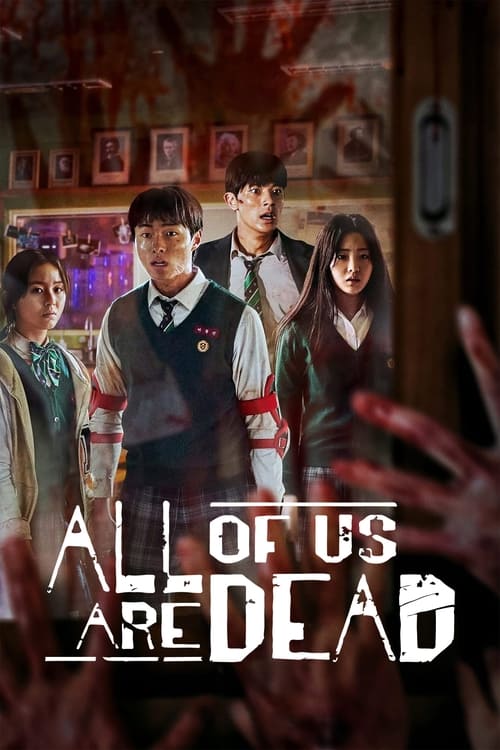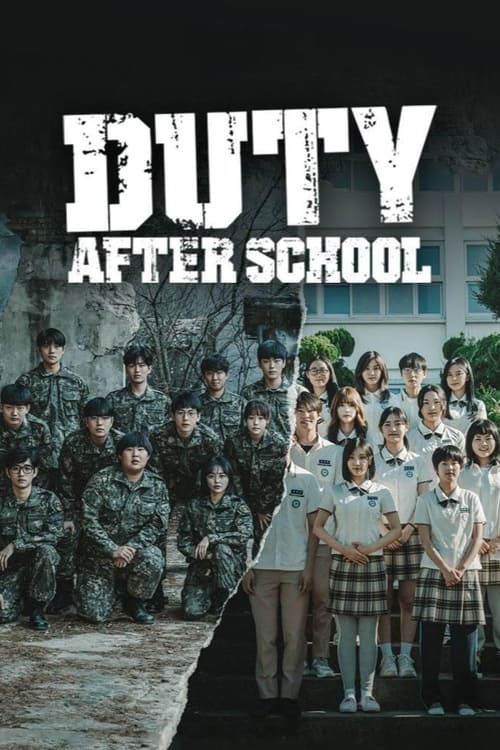
Ask Your Own Question
What is the plot?
In the third episode of "Happiness," titled "Locked In," the story begins with the aftermath of the previous events, where the characters are grappling with the emotional and psychological fallout of the mysterious disease that has begun to spread. The episode opens with a tense atmosphere in the apartment complex, where residents are increasingly paranoid about the infection. The camera pans through the dimly lit hallways, capturing the anxious expressions of the residents as they whisper about the latest developments.
The main characters, including the protagonist, are seen discussing their fears and the rumors circulating about the disease. They express their concerns about the government's response and the lack of information. The protagonist, feeling a sense of responsibility, decides to take action and gather more information about the disease. This decision sets the tone for the episode, highlighting their determination to protect their community.
As the day progresses, the protagonist and a few other residents venture out to a nearby convenience store to stock up on supplies. The store is eerily quiet, and the tension is palpable as they navigate the aisles, constantly looking over their shoulders. They overhear a conversation between the store owner and a customer discussing the latest cases of the disease, which adds to their anxiety. The protagonist feels a growing sense of urgency to return to the apartment complex and share the information they've gathered.
Upon returning, they find that the atmosphere has shifted dramatically. The residents are now more isolated, and there are visible divisions among them. Some are hoarding supplies, while others are trying to maintain a sense of normalcy. The protagonist attempts to rally the residents to come together and support one another, but their efforts are met with skepticism and fear. This moment highlights the internal struggle of the protagonist, who is torn between wanting to unite the community and the growing sense of hopelessness around them.
Later, a shocking event occurs when one of the residents collapses in the hallway, exhibiting symptoms of the disease. Panic ensues as the other residents react with fear and confusion. The protagonist rushes to help, but the situation escalates quickly. The residents begin to argue about what to do, with some advocating for isolation while others want to call for help. The protagonist feels a deep sense of frustration as they try to mediate the situation, but their voice is drowned out by the chaos.
As night falls, the building is plunged into darkness due to a power outage, further heightening the sense of dread. The residents are now trapped in the building, and tensions rise as they are forced to confront their fears in close quarters. The protagonist tries to keep everyone calm, suggesting they hold a meeting to discuss their next steps. However, the meeting quickly devolves into accusations and blame, revealing the cracks in their relationships.
In a pivotal moment, the protagonist makes a bold decision to take charge. They propose a plan to create a watch system, where residents will take turns monitoring the hallways and keeping an eye on anyone who shows symptoms. This idea is met with mixed reactions, but ultimately, a few residents agree to participate. The protagonist feels a surge of hope as they see some willingness to cooperate, but they are also aware of the underlying tensions that remain.
As the night progresses, the protagonist takes their turn on watch. They patrol the dark hallways, feeling a mix of fear and determination. During their watch, they overhear a conversation between two residents who are plotting to take matters into their own hands, believing that the authorities will not help them. The protagonist confronts them, leading to a heated argument that reveals the desperation and paranoia that have taken hold of the community.
The episode culminates in a dramatic confrontation when one of the residents, driven by fear, attempts to break into another apartment, believing that the occupants are hiding information about the disease. The protagonist intervenes, leading to a physical struggle that spills into the hallway. The chaos draws the attention of other residents, who gather to witness the confrontation. In this moment, the protagonist realizes the fragility of their community and the lengths to which fear can drive people.
The episode ends on a cliffhanger, with the protagonist standing amidst the chaos, feeling the weight of their responsibility. The camera zooms in on their face, capturing a mix of determination and despair as they contemplate the future of their community in the face of an uncertain and terrifying threat.
What is the ending?
In the ending of "Happiness," Season 1, Episode 3 titled "Locked In," the characters find themselves grappling with the consequences of their actions and the emotional turmoil that ensues. The episode concludes with a tense standoff, revealing deep-seated fears and desires among the main characters, ultimately leading to a moment of reckoning.
As the episode unfolds, we see the characters trapped in a confined space, both physically and emotionally. The atmosphere is thick with tension as they confront their inner demons and the reality of their relationships. The climax builds as secrets are revealed, and the characters must face the truth about themselves and each other.
The episode ends with a sense of unresolved conflict, leaving the characters at a crossroads. Each character's fate is left hanging in the balance, emphasizing the complexity of their situations and the choices they must make moving forward.
As the episode "Locked In" progresses, we find ourselves in a dimly lit room where the main characters are trapped, both literally and metaphorically. The air is heavy with anxiety, and the walls seem to close in on them, mirroring their emotional states.
Scene 1: The episode opens with the characters realizing they are locked in a room, a situation that heightens their sense of vulnerability. The camera pans across their faces, capturing the fear and confusion etched in their expressions. Each character reacts differently; some are frantic, while others attempt to maintain a facade of calm. The tension is palpable as they begin to argue about how to escape, revealing underlying conflicts and unresolved issues among them.
Scene 2: As the characters bicker, we see flashbacks that provide insight into their pasts. These glimpses reveal the motivations behind their current behaviors, showcasing their insecurities and desires. The flashbacks are interspersed with the present, creating a stark contrast between who they were and who they have become. The emotional weight of these memories adds depth to their interactions, as they struggle to reconcile their past with their present circumstances.
Scene 3: The group dynamics shift as alliances form and break. One character, feeling cornered, lashes out, leading to a heated confrontation. The dialogue is sharp and cutting, exposing raw emotions and long-held grudges. The camera captures the intensity of the moment, focusing on the characters' faces as they grapple with their feelings of betrayal and fear. This scene serves as a turning point, forcing them to confront not only their relationships with each other but also their individual fears.
Scene 4: As the episode nears its climax, the characters begin to share their vulnerabilities. They open up about their fears, regrets, and desires, creating a moment of connection amidst the chaos. The atmosphere shifts from one of hostility to a fragile understanding, as they realize that they are not alone in their struggles. This moment of vulnerability is beautifully shot, with close-ups that highlight the emotional weight of their confessions.
Scene 5: The final moments of the episode are charged with tension as the characters must make a choice. The door to their confinement is suddenly unlocked, but the decision to leave is not straightforward. Each character stands at a crossroads, contemplating the implications of their next move. The camera lingers on their faces, capturing the uncertainty and fear of the unknown.
In the end, the characters emerge from the room, but they are forever changed. The episode closes with them stepping into the light, symbolizing the potential for growth and change, yet the unresolved conflicts linger in the air. Each character's fate remains uncertain, leaving viewers to ponder the complexities of their relationships and the choices they will make moving forward. The episode concludes on a note of ambiguity, emphasizing the ongoing struggle for happiness amidst the chaos of life.
Is there a post-credit scene?
In the episode "Locked In" of the show Happiness, there is no post-credit scene. The episode concludes without any additional content after the credits roll, focusing instead on the resolution of the main plot and character arcs presented throughout the episode. The narrative wraps up the tensions and developments that have unfolded, leaving viewers with a sense of closure for the events of this particular episode.
What happens to the main characters when they are trapped in the building?
In episode 3, titled 'Locked In', the main characters find themselves trapped in their apartment building due to a sudden lockdown caused by a mysterious outbreak. The tension escalates as they grapple with their fears and uncertainties about the situation outside.
How do the characters react to the news of the lockdown?
The characters exhibit a range of emotional responses to the lockdown. Some, like the protagonist, feel a sense of panic and claustrophobia, while others try to maintain a sense of normalcy, leading to conflicts and heightened emotions among the group.
What internal conflicts do the characters face during the lockdown?
During the lockdown, characters confront their personal demons and unresolved issues. For instance, one character struggles with feelings of isolation and guilt, while another faces the reality of their relationships, leading to intense emotional confrontations.
Are there any significant character developments in this episode?
Yes, in this episode, several characters experience significant development. One character, who has been emotionally distant, begins to open up about their past, revealing vulnerabilities that deepen their relationships with others in the building.
What role does the building itself play in the characters' experiences during the lockdown?
The building serves as a microcosm of the characters' lives, amplifying their fears and insecurities. As they navigate the physical confines of the building, it becomes a symbol of their emotional states, reflecting their struggles and the dynamics of their relationships.
Is this family friendly?
In "Locked In," the third episode of "Happiness," there are several elements that may be considered objectionable or upsetting for children or sensitive viewers.
-
Tension and Anxiety: The episode features scenes that create a sense of claustrophobia and panic, as characters deal with being trapped in a situation. This may evoke feelings of fear or distress.
-
Violence and Threats: There are moments where characters face threats from others, which could be unsettling for younger viewers. The portrayal of aggression and the potential for harm can be intense.
-
Emotional Turmoil: Characters experience significant emotional struggles, including feelings of isolation, despair, and betrayal. These themes may resonate deeply and could be upsetting for sensitive individuals.
-
Dark Themes: The episode explores darker aspects of human nature and relationships, including manipulation and moral dilemmas, which may not be suitable for all audiences.
-
Intense Interpersonal Conflicts: The conflicts between characters can escalate to heated arguments, which might be distressing for younger viewers who are sensitive to conflict.
These elements contribute to a tense atmosphere that may not be appropriate for all audiences, particularly children.








































